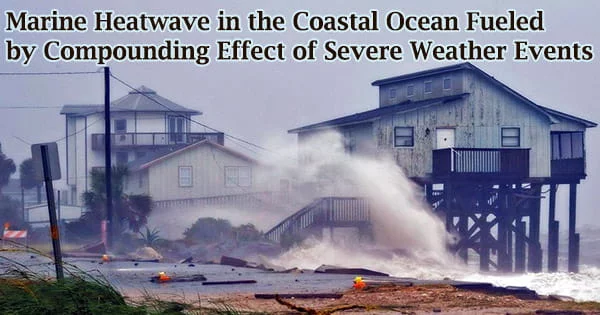After being devastated by hurricanes over the past month, a number of coastal villages are now picking up the debris. A category 4 hurricane named Laura and a category 2 hurricane named Sally appeared to meander across the Gulf of Mexico, continually changing forecasts and keeping meteorologists on their toes. These storms seemed to swell in power in the hours before they reached land.
With assistance from the Jet Propulsion Laboratory, researchers at the Dauphin Island Sea Lab can provide light on why these storms quickly strengthened as they swept across the continental shelf.
“Surprisingly, both Hurricane Laura and Hurricane Sally appeared to have similar setups to Hurricane Michael with both storm events being preceded by smaller storms (i.e. Hurricane Hanna and Marco, respectively),” Dr. Brian Dzwonkowski explained.
“This pre-storm setup of the oceanic environment likely contributed to the intensification prior to landfall. Importantly, this pre-landfall intensification was not well predicted by hurricane models or forecasts, which as you can imagine is critical information for evacuation and disaster preparation.”
The study “Compounding impact of severe weather events feeds marine heatwave in the coastal ocean” by Dzwonkowski and his team describes how changing the thermal characteristics of the water column during one storm can alter the intensity of subsequent storms. The findings were released in September’s issue of Nature Communications.
The study focuses on the effects of Hurricane Michael, which struck Mexico Beach, Florida, and the other areas on October 10, 2018. Hours before it hit shore, the category 5 storm got stronger.
Surprisingly, both Hurricane Laura and Hurricane Sally appeared to have similar setups to Hurricane Michael with both storm events being preceded by smaller storms (i.e. Hurricane Hanna and Marco, respectively). This pre-storm setup of the oceanic environment likely contributed to the intensification prior to landfall. Importantly, this pre-landfall intensification was not well predicted by hurricane models or forecasts, which as you can imagine is critical information for evacuation and disaster preparation.
Dr. Brian Dzwonkowski
Dzwonkowski, a physical oceanographer with the Dauphin Island Sea Lab and Associate Professor at the University of South Alabama in the Department of Marine Sciences, and his team tracked down the key events and processes that pushed the coastal waters in the Gulf of Mexico to an extremely warm state (i.e. a marine heatwave), likely contributing to the intensification of a storm so close to shore.
The continental shelf’s shallow bottom, in contrast to the deep ocean, reduces the amount of cold water that may be mixed up to the surface, lowering the sea surface temperature and weakening incoming storms.
Dzwonkowski and his group concentrated on the process through which a vigorous mixing event drives surface heat downward and depletes the bottom water’s cold water reserve. The oceanic environment of the shelf may be prepared for the possible development of extreme storm occurrences, such as Hurricane Michael, if this mixing is followed by a period of rewarming, such as an air heatwave.
“This work shows that understanding the preceding weather conditions in a region where a storm is going to make landfall can improve interpretation of hurricane model forecasts and what the storm is likely to do prior to landfall,” says Dr. Dzwonkowski
The team used data from a mooring location off the coast of Dauphin Island to map out heat flux and mixing in the Mississippi Bight in late summer and early fall.
The mooring location gathers information from across the water column, making it possible to calculate the shelf’s total heat content. The time before Hurricane Michael made landfall turned found to have the hottest ocean temperatures across this 13-year span.
“Turns out hurricanes and atmospheric heatwaves will be getting stronger in a warming world which would indicate the identified sequence of events that generate these extreme conditions may become more frequent,” Dzwonkowski said. “The occurrence of extreme heat content events, like marine heatwaves has significant implications for a broad range of scientific management interests beyond hurricane intensity.”
It’s important to note that climate change is predicted to increase the frequency and intensity of the mechanisms that caused this maritime heatwave, increasing the risk of such catastrophic circumstances.
For instance, long-term warming trends have already put stress on shelves that are prone to hypoxia and coral reefs. The societal and economic importance of these temperature-specific benthic populations and habitats is often high.
As a result, it is anticipated that the newly discovered sequence of compounding processes would affect a variety of coastal interests and should be taken into account when making management and disaster response decisions.
This research was funded by the NOAA RESTORE Science Program and NOAA NGI NMFS Regional Collaboration network.





